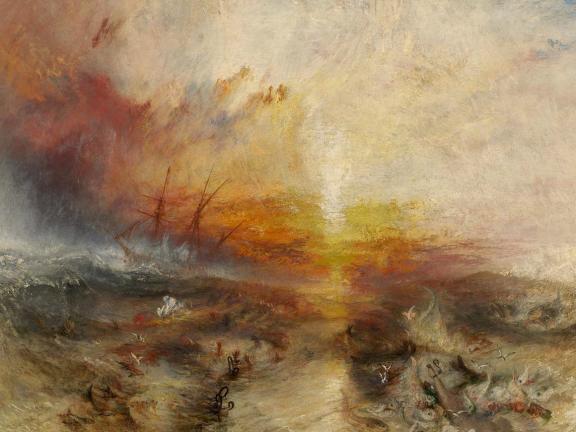
Joseph Turner, a prominent Romanticist, expressed strong opinions on the anti-slavery agenda, and The Slave Ship is a part of his activist statements. The background portrays a lost ship caught in the storm (Turner). Foreground displays sea creatures and chained black slaves pushed into the water. I find it fascinating that romantic landscape painting can not only exhibit the sentiments of the artist but also serve as a political argument.
I think Turner has reflected the power of nature as a representation of extreme mental states of despair and violence against slaves in a convincing romantic manner. For instance, through the sky’s color that becomes redder closer to the ship, the artist indicates the cruel nature of its masters through the technique of sublime. Continuing the symbolism, the slaves are chained, communicating their imposed inferiority, and close to the sea creatures, which might hint at the biological determinism movement of the time. Brace argues that “the painting leaves us to question the history of modernity and the meaning of freedom both in the past and in the present” (1). Brace argues that this piece played a role in the anti-slavery movement and made whites empathize with often dehumanized slaves, which spurred political change.
Works Cited
Brace, Laura. “Fallacies of hope: Contesting narratives of abolition in Turner’s Slave Ship.” Atlantic Studies, vol. 16, no. 1, 2019.
Turner, Joseph Mallord William. The Slave Ship. 1840. The Museum of Fine Arts, Boston. MFA, Web.